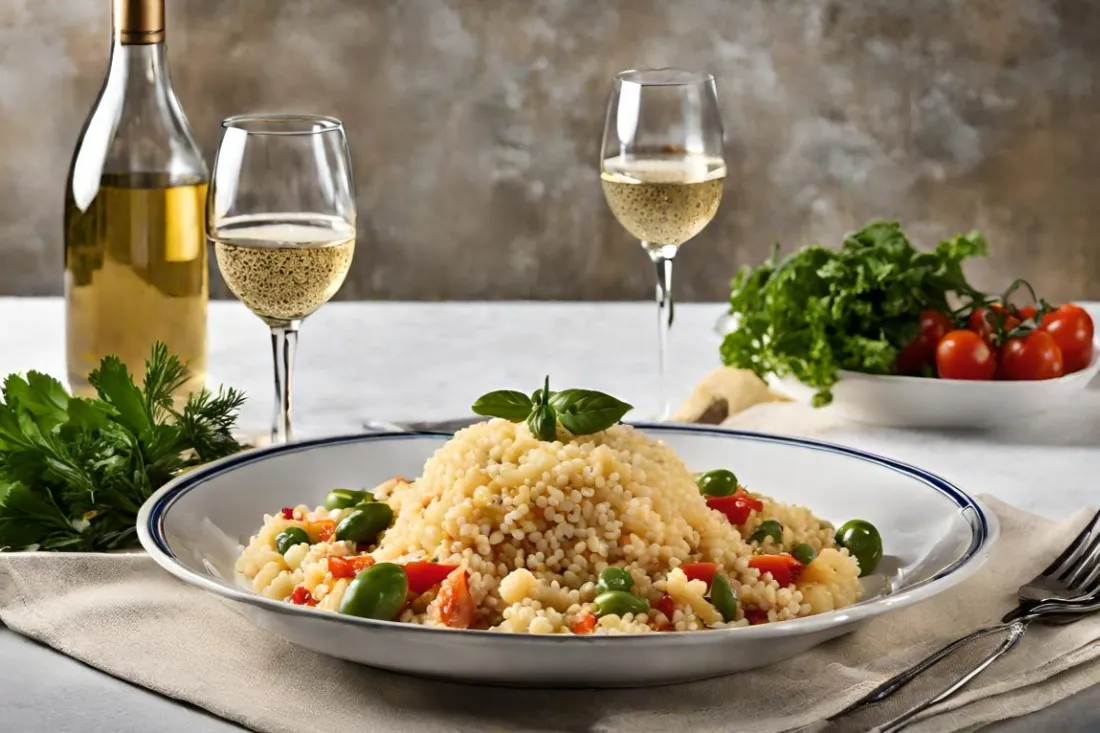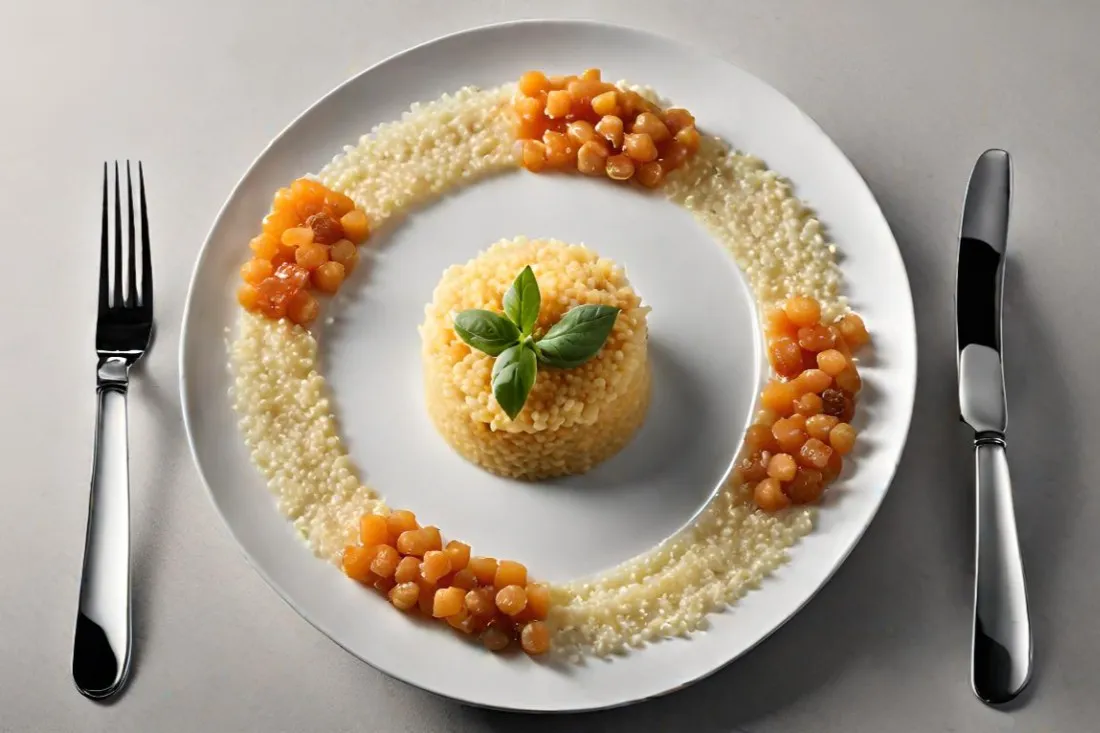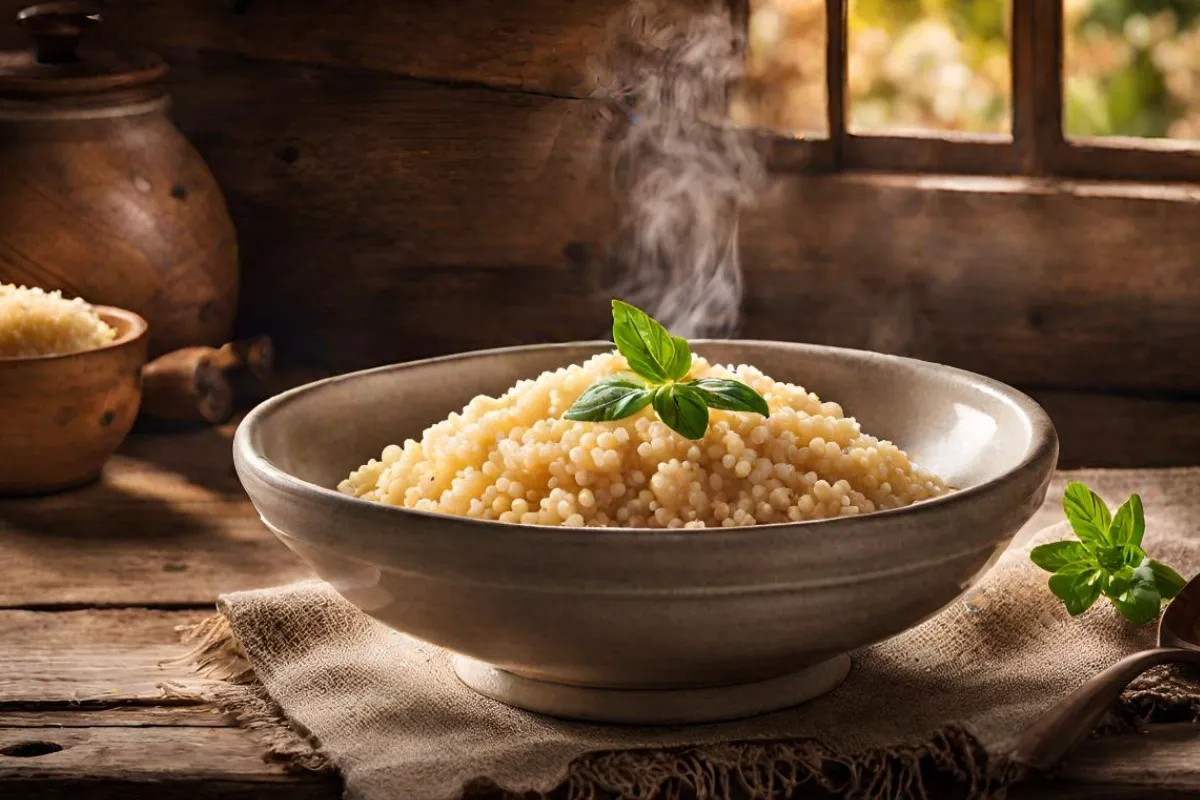In the heart of Italian cuisine lies a simple yet delightful dish that warms the soul and pleases the palate: Pastina. This article delves into the world of pastina, exploring its ingredients, variations, cooking techniques, and much more. Whether you’re a seasoned chef or a culinary novice, this guide will take you through the journey of creating the perfect bowl of pastina, a dish cherished by both children and adults alike. So, let’s embark on this delicious adventure and discover the secrets of this classic Italian comfort food.
Introduction to Pastina
What is Pastina?
Pastina, often hailed as the quintessential comfort food of Italy, is more than just a dish; it’s a culinary embrace. This tiny star-shaped pasta has been a staple in Italian households for generations, often being the first solid food introduced to infants. But don’t let its simplicity fool you; pastina is a versatile canvas for a plethora of flavors and ingredients, making it a beloved choice for all ages.
The Cultural Significance of Pastina in Italian Cuisine
In Italy, food is synonymous with tradition and family, and pastina is no exception. It’s the embodiment of homemade goodness, often prepared lovingly by nonnas (grandmothers) across the country. Pastina isn’t just food; it’s a nostalgic journey to childhood, a symbol of care during sickness, and a celebration of simplicity in cooking. This tiny pasta holds a big place in the hearts of Italians, representing comfort and love in every spoonful.
Ingredients and Variations

Key Ingredients for Classic Pastina
Creating a bowl of classic pastina recipe is surprisingly straightforward, requiring only a handful of ingredients. At its core, pastina needs just pasta, broth (or water), butter, and milk. These simple components come together to create a dish that’s both unassuming and deeply comforting. The magic of pastina lies in its simplicity, allowing each ingredient to shine through.
Basic Ingredients
The foundation of any pastina dish is, of course, the pasta itself. These tiny, star-shaped morsels are the perfect size for a comforting, easy-to-eat meal. Next, a liquid base – typically a light broth or water – is used to cook the pasta. The choice between broth and water can influence the depth of flavor in the dish, with broth offering a richer taste.
Optional Additions and Variations
While the basic recipe is delightfully simple, pastina recipe is like a culinary chameleon, easily adaptable to different tastes and preferences. A pat of butter adds a creamy richness, while a splash of milk creates a silky, comforting texture. For those looking to elevate the dish, a sprinkle of freshly grated Parmesan or Pecorino Romano cheese can add a savory depth. Salt and pepper are used to taste, allowing for personalization in every bowl.
Exploring Different Types of Pastina
Pastina, which literally means “little pasta,” comes in various shapes and sizes. While the classic star-shaped variety is most common, other types like acini di pepe (tiny peppercorn-sized pasta) also fall under the pastina umbrella. Each variety offers a slightly different texture and experience, making pastina a versatile ingredient in the kitchen.
Classic Pastina vs. Other Varieties
The choice of pastina type can influence the dish’s final texture and appearance. Classic pastina, with its tiny star shape, provides a delicate and playful texture, perfect for light broths or as a base for more robust flavors. Larger varieties like acini di pepe, on the other hand, offer a more substantial bite, making them ideal for heartier soups and stews.
Cooking Techniques Of Pastina Recipe
Step-by-Step Cooking Method
Cooking pastina recipe is an art in simplicity. The process is straightforward, yet it requires a touch of finesse to achieve that perfect, comforting consistency. Here’s a step-by-step guide to making classic pastina:
- Start with the Liquid: Begin by bringing your choice of broth or water to a boil in a saucepan. The amount of liquid will determine the soupiness of your pastina.
- Add the Pastina: Once the liquid is boiling, sprinkle in the pastina, stirring gently to ensure it cooks evenly.
- Simmer to Perfection: Reduce the heat and let the pastina simmer. This is where it absorbs the flavors of the broth and begins to soften.
- Finish with Butter and Milk: Once the pastina is cooked, turn off the heat. Stir in a knob of butter for richness and a splash of warm milk for creaminess.
Traditional Cooking vs. Modern Twists
Traditionally, pastina is cooked until it’s soft and has absorbed most of the liquid, resulting in a porridge-like consistency. However, modern variations might include cooking it al dente and serving it in a more broth-like form. Some contemporary recipes even suggest adding ingredients like vegetables, herbs, or proteins to transform it into a more substantial meal.
Tips for Perfect Texture and Flavor
- Liquid Ratio: The key to perfect pastina is the liquid-to-pasta ratio. Too much liquid, and you’ll have a soup; too little, and it’ll be dry.
- Seasoning: Season your cooking liquid well. If you’re using water, don’t forget to add a pinch of salt for flavor.
- Stirring: Gentle stirring is crucial. It prevents the pastina from sticking to the bottom of the pan and ensures even cooking.
- Taste Testing: Always taste your pastina before serving. It’s the best way to check if it needs more seasoning or cooking time.
Serving and Pairing Ideas
Creative Serving Suggestions
Pastina, in its essence, is incredibly versatile. Whether you’re serving it as a main dish or a side, there are countless ways to dress it up and make it shine.
As a Main Dish
For a heartier meal, consider adding proteins like shredded chicken, diced ham, or even a softly poached egg. Vegetables like spinach, peas, or carrots can also be stirred in for added nutrition and color. These additions transform pastina from a simple comfort food into a balanced and satisfying meal. If you’re looking for a comforting main course to accompany your pastina, try this easy Crockpot Chicken and Dressing recipe for a delightful meal.
As a Side Dish
Pastina can also play a supporting role on your dining table. Serve it alongside grilled meats or roasted vegetables. Its creamy texture and mild flavor make it an excellent accompaniment to bolder dishes, providing a soothing balance to spicy or intensely flavored main courses. For an indulgent twist, pair your pastina with this rich and creamy Crab Mac and Cheese Recipe, blending classic comfort foods for a truly satisfying meal.
Pairing Pastina with Other Foods
The subtle, comforting taste of pastina makes it a fantastic partner for a variety of foods.
Complementary Flavors and Textures
Consider pairing pastina recipe with ingredients that offer a contrast in texture or flavor. For instance, the creaminess of pastina goes wonderfully with the crispness of a fresh salad or the crunch of toasted bread.
Wine Pairing with Pastina
When it comes to wine, a light and crisp white wine like Pinot Grigio can complement the delicate flavors of pastina. If your pastina dish includes heartier ingredients or richer sauces, a fuller-bodied white or even a light red wine could be an excellent match.
Nutritional Information Of Pastina Recipe

Health Benefits and Nutritional Value
Pastina, while simple, packs a surprising nutritional punch. It’s not just about the carbs; this tiny pasta can be part of a balanced diet.
Caloric Content and Dietary Considerations
A serving of pastina is relatively low in calories, making it a suitable option for those monitoring their calorie intake. However, it’s important to consider the additions like butter and cheese, which can increase the calorie count. For a healthier version, opt for low-fat milk and less butter.
Vitamins and Minerals in Pastina
Pastina is a good source of carbohydrates, providing energy for your day. When made with whole grain pasta, it offers more fiber and nutrients like B vitamins. If you choose to add cheese, you’ll also benefit from calcium and protein.
Healthier Alternatives
For those looking for gluten-free options, pastina recipe made from rice or corn flour is available. These alternatives provide similar textures and flavors but cater to those with dietary restrictions.
Pastina Recipe in World Cuisines
Pastina Beyond Italy
While pastina is a staple in Italian kitchens, its influence extends far beyond Italy’s borders. This section could explore how different cultures have embraced and adapted pastina recipe, integrating it into their own culinary traditions.
Pastina in Mediterranean Dishes
In Mediterranean cuisine, pastina often appears in soups and stews, sometimes seasoned with local herbs and spices. This subsection could delve into specific dishes from various Mediterranean countries that feature pastina.
Global Fusion Recipes
Pastina’s versatility makes it an excellent ingredient for fusion dishes. This subsection could showcase innovative recipes that blend pastina recipe with flavors and ingredients from other cuisines, such as Asian-inspired pastina stir-fries or Latin American pastina salads.
The Universal Appeal of Pastina
This subsection could discuss why pastina has gained popularity worldwide, focusing on its universal appeal as a comfort food, its ease of cooking, and its adaptability to various dietary needs and preferences.
Innovative Pastina Recipe Creations

Modern Twists on Traditional Pastina
In today’s culinary landscape, chefs and home cooks are constantly reinventing classic dishes. Consequently, this section will delve into contemporary takes on traditional pastina, highlighting creative recipes that push the boundaries of this classic dish.
Pastina in Fine Dining
Moreover, we’ll explore how chefs in high-end restaurants are incorporating pastina into gourmet dishes. This will include examples of pastina recipe used in sophisticated plating, paired with luxury ingredients like truffles or seafood, and presented in a fine dining context.
Pastina as a Base for Experimental Cooking
Additionally, this subsection will discuss how pastina’s neutral flavor and comforting texture make it an ideal base for experimental cooking. We’ll showcase recipes that use pastina in unexpected ways, such as in pastina-based desserts, pastina salads with exotic ingredients, or as a gluten-free alternative in grain bowls. For those who love experimenting with unique flavor combinations, explore the ingredients in a Cheesy Gordita Crunch and consider how you can incorporate similar bold flavors into your pastina dishes.
The Future of Pastina in Culinary Arts
Furthermore, this subsection will speculate on the future role of pastina recipe in the culinary world. It will discuss trends in pasta cooking and how pastina might adapt to changing dietary preferences and cooking technologies.
FAQs
Frequently Asked Questions
Pastina, with its simplicity and versatility, often raises questions about preparation, variations, and serving. Here are some of the most common inquiries:
- Can Pastina Be Made Vegan? Absolutely! To make vegan pastina recipe, use vegetable broth instead of chicken broth and substitute the butter and milk with plant-based alternatives like almond or soy milk and vegan butter.
- How Do You Store Leftover Pastina? Store leftover pastina recipe in an airtight container in the refrigerator. It will keep for up to 3-4 days. When reheating, you may need to add a little water or broth, as pastina tends to absorb liquid over time.
- Is Pastina Suitable for Babies? Yes, pastina is often one of the first solid foods given to babies due to its small size and easy digestibility. Ensure it’s cooked to a soft texture and consult with a pediatrician for any dietary concerns.
- Can You Add Meat or Vegetables to Pastina? Certainly! Pastina is like a blank canvas. Feel free to add cooked meats, vegetables, or even a sprinkle of herbs to enhance its flavor and nutritional value.
- What’s the Best Way to Flavor Pastina? While pastina is delightful in its traditional form with just butter and cheese, you can flavor it with garlic, herbs, or incorporate it into soups and stews for a more robust dish.
Conclusion
Summing up the pastina experience is like closing a book filled with warm, comforting memories. This humble pasta, with its tiny size and simple preparation, holds a special place in Italian cuisine and hearts worldwide. It’s a testament to the fact that sometimes, the simplest things in life are the most satisfying.
Pastina’s versatility makes it a perfect dish for any occasion, whether it’s a soothing meal on a cold day, a light accompaniment to a family dinner, or a nostalgic dish that takes you back to your childhood. Its ability to blend with various ingredients also makes it a canvas for culinary creativity.
As we conclude this exploration of pastina, it’s clear that this isn’t just a dish; it’s a culinary tradition, a comfort food, and a symbol of home cooking at its finest. Whether you stick to the classic recipe or experiment with your own variations, pastina is sure to bring warmth and comfort to your table.

